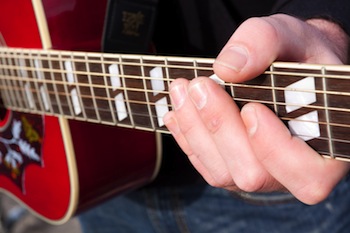More so than almost any other genre, pop music has a feeling of spontaneity about it. Done well, a pop song, and in particular its performance, makes great use of the musicians’ collective abilities to improvise on the spot. We love when a guitar solo sounds like it’s happening on the spur of the moment, the ideas being generated extemporaneously.
There’s a similar feeling of spontaneity about the structure of pop songs. When a song sounds good, it sounds as though it’s writing itself, as if the ideas are happening impulsively and immediately.
 Need chord progressions? “Essential Chord Progressions” and “More Essential Chord Progressions” will give you hundreds that you can use as is, or modify to suit your own purposes. Get them as part of “The Essential Secrets of Songwriting” 10-eBook Bundle. READ MORE about today’s free deal.
Need chord progressions? “Essential Chord Progressions” and “More Essential Chord Progressions” will give you hundreds that you can use as is, or modify to suit your own purposes. Get them as part of “The Essential Secrets of Songwriting” 10-eBook Bundle. READ MORE about today’s free deal.
But is it possible to worry too much about song structure? Is it possible for the actual nuts & bolts of a song — the verse – pre-chorus – chorus – bridge aspect — to kill a song’s sense of spontaneity?
I would argue the opposite: the predictable structure of songs ensures that there is a natural-sounding ebb and flow of musical energy.
That ebb and flow comes from the expectations we have for what typically happens in each section of a song. Verses tend to be low-energy sections when compared to the chorus, during which energy gets pumped up by louder playing, fuller instrumentation, higher melodies, and the addition of backing vocals.
This section-defined energy plan helps give music its natural feel. That’s not to say that you must use verse-chorus-bridge formats to have a successful song. Many songs make do with a verse-only structure. In the absence of song sections, what can you do to ensure that the music has this important ebb and flow?
Here are some ideas:
- Ebb and flow of a melody is usually governed by pitch. High melodies equate to higher energy.
- Ebb and flow of chords is usually governed by how they use the tonic (key) chord. As progressions move toward the tonic chord, energy increases.
- If your song is a verse-only format, try adding a refrain (“Like a Rolling Stone”) or a bridge after the second verse, as a way of changing up the intensity of the music.
- If your song is verse-only, try to shape the melody so that it starts low, moves higher, then moves lower again. This leads to a natural ebb and flow in the musical energy of your melody line.
- No matter what formal design your song uses, try to find ways to change up the instrumentation, or the way your instruments are being played.
Concerning yourself with the structure of your song shouldn’t have any negative impact at all on its success. Songs will succeed or fail based on other factors (the lyrics, the melodies, the way the chords work, etc.). Thinking about the structure of your songs should only be a help.
 How serious are you about improving your songwriting technique? “The Essential Secrets of Songwriting” 10-eBook Deluxe Bundle covers every aspect of songwriting. Get ready to take your writing to a new level of excellence! READ MORE..
How serious are you about improving your songwriting technique? “The Essential Secrets of Songwriting” 10-eBook Deluxe Bundle covers every aspect of songwriting. Get ready to take your writing to a new level of excellence! READ MORE..











Pingback: Can Worrying About Song Structure Kill a Song? - The Hit Songwriting Formula | The Hit Songwriting Formula